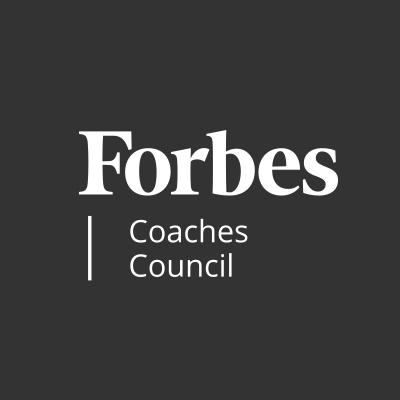The global Black Lives Matter (BLM) movement triggered many corporate commitments that might deliver significant reforms inside companies and society in general. At the same time, most companies are thinking about what to keep or jettison from our experiment in working from home (WFH) — and now hybrid home/office models — once the Covid-19 pandemic restrictions are lifted.
Without equating the fundamental challenge of reforming our companies and society to reflect that Black lives do deeply matter with dealing with a global pandemic that will pass, I believe there are three leader behaviors that can respond well to both change waves, one chronic (systemic racism) and one acute (the pandemic).
With intent and rigor, you can use these practices to ensure your organization, unlike a well-stretched rubber band, doesn’t just snap back to how things were. These practices can enable you to shape work, culture, practice and process, bringing meaningful and lasting change that improves productivity and engagement across a diverse workforce working in diverse ways from diverse locations.
1. Understanding And Empathy
Leaders need to better understand the lives, concerns and needs of a diverse workforce and customer base. In “3 Ways Leaders Can Make Black Lives Matter in the Workplace,” Meredith Somers builds on the brilliant scholarship of Tina Opie and Laura Morgan Roberts, emphasizing how “standing in a Black person’s shoes helps someone who isn’t Black to acknowledge racial discrimination and reduce prejudice.” They offer powerful ways to gain this insight, including that leaders need to become far more competent at seeing systemic and personal challenges and at developing and implementing policies and leadership behaviors that address both.
Finding ways for your talent to be productive WFH or in a hybrid way is significant, and the challenge of letting go of our assumptions and practices that are not equal to the challenge of BLM might be monumental. Author and consultant Ellen Wingard explained to me that “for all of us as leaders, whatever your own identity, ethnicity, gender or orientation, this is an opportunity to understand and take ownership of addressing the privilege of your role to dismantle structural barriers to equity and inclusion while ensuring your teams can sustain their sense of purpose, health and safety in the ongoing crises.” Understanding and empathy for uniqueness is a great start, but only a start, as action is essential.
2. Purpose And Commitment To Impact
Authentic leaders meet the moment by bringing passion and rigor to their purpose. I’d suggest that a truly fit-for-today-and-tomorrow leadership purpose might be to transform our business and organization in ways that keep all our people safe, engaged, productive, fairly treated and continually developing. We can recommit to creating meaning in work and ensuring everyone’s work contributes to something significant for the company and society.
Ellen Wingard sees the challenge of BLM as “a strategic and moral imperative requiring rigorous follow-through on structural changes and in our scorecards.” Writing in Forbes, Jason Wingard (no relation to Ellen) quotes Julie Sweet, Accenture’s North American CEO, on how to make words come to life in a sustained way: “If diversity is a business priority, […] then you need to treat it like a business priority. You set goals, have accountable leaders, you measure progress, and you have an action plan. If you do those four things, you will make progress.”
Writing about WFH models in Harvard Business Review (registration required), authors Julian Birkinshaw, Jordan Cohen and Pawel Stach demonstrated that knowledge workers can be more productive WFH if leaders address key challenges, including focusing on what is hard to do in a virtual environment, helping colleagues manage up and down and ensuring real development is happening that accelerates each colleague’s career experiences and capability building. Making real change needs rigor and the kind of intense and sustained follow-through over time that overcomes long-standing resistance to change, whether we are talking about the deep-seated stereotypes and prejudices that BLM confronts or the long-held assumptions of leaders that to be productive, their people need to be in the office.
3. Creative And Courageous Collaboration
When it comes to making a sustained difference in Black lives, it will take courage to take on conversations that have real career risk and to advocate for significant strategy, policy and process changes. Implementing what Somers called “structural and symbolic changes” will require leaders to find their voices to challenge limiting assumptions and take risks to make these changes. We can bolster our courage by collaborating with others who share our purpose, getting creative as to policy and practice changes that can make a meaningful difference in Black lives.
These collaboration behaviors can bring meaningful change to WFH/hybrid office models by identifying and marshaling the kinds of resources colleagues need that are beyond the reach of the individual leader. Leaders will have to let go of what has worked for them in the past in favor of changed assumptions and new ways of working. Think FaceTime, not face time, being intentional about connecting with your people in meaningful and equitable ways, wherever you are and wherever they are. Letting go is never comfortable, but change isn’t about comfort. Collaborating with other leaders can be reinforcing in the face of discomfort.
Demonstrating Black lives matter in our companies and making hybrid office/WFH models work can powerfully promote engagement and productivity, but only if leaders commit to treating all colleagues fairly, intentionally sharing opportunities for the best work and key development experiences across everyone, regardless of where they are doing their work, and regardless of race, gender, nationality, school or any other aspect of our diversity. Leaders need to let go of equal/same for fair/equitable, helping people create productive and often unique boundaries that enable adaptability to work and family challenges and that enable organizational resilience, where teams work in new connected ways that support and challenge each team member so they can bring their unique best every day.
Use these three practices rigorously to intentionally reshape the rubber band of work, culture, practice and process, and over time, with unwavering commitment, we can make change stick.


